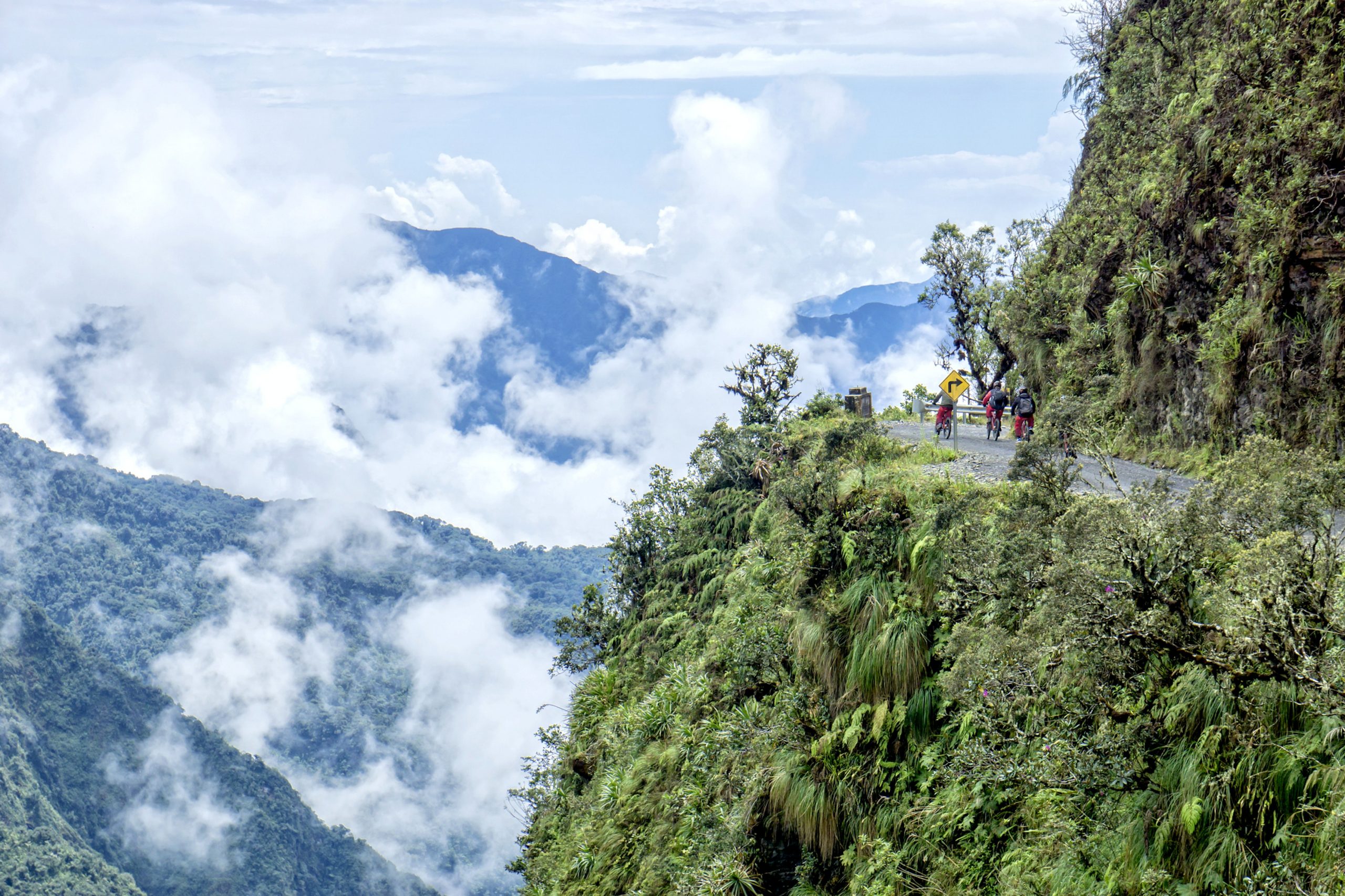From the town of Coroiko in the eastern foothills of the majestic Andes to the capital (albeit unofficial) is only 57 kilometers. But it’s in a straight line. Jorge was upset, remembering that it was already as much as 95 kilometers along mountain passes and serpentines. But even that didn’t scare him. The worst thing is to overcome the first 40 kilometers.
No wonder people still pray before traveling this road. Formally, it is called the Northern Yungas Road, but in fact no one calls it that. All Bolivians and the rest of the inhabitants of the planet know it as the Yungas Death Road. More optimistic people call it the Road of Destiny. Although the first name suits her better.
What is so terrible about it, and why is it called the Road of Death?

Until recently, this was the only route connecting Coroico and La Paz. Anyone who wanted to get to La Paz from Coroico or back had to overcome one of the most dangerous routes in the world.
The Road of Death is a winding mountain path passing at a fairly high altitude. This is an extremely narrow (usually no more than 3.2 meters) single-lane, but two-way road. On one side of the road there are steep steep mountains, and on the other side there are equally steep and equally steep cliffs up to 600 meters deep.
From a distance, the Road of Death resembles a scratch on the body of mountains. But it can be called expensive with a big stretch, since the main part of the path is just a leveled and rolled primer. There is no asphalt here. The road surface is rocky and clay.
Therefore, during the rainy season it is strongly washed away. Traveling on it at this time is the most dangerous and unpredictable. There is a high probability of mudflows or rockfall. There have never been any fences, fenders or deceleration lanes here, and it is unlikely that there will ever be.
A bit of history
The road was built by captive Paraguayans in the 1930s during the Chaco War between Paraguay and Bolivia for control of the northern part of the Gran Chaco region. The elevation changes on Death Road are about the same.
When leaving La Paz, where the altitude is 3600 meters, the road rises to an altitude of 4650 meters at the Cristo de la Cumbre pass (in the original Cristo de la Cumbre), and then descends to 1200 meters on the rest way up to Coroico.
Add to that the tight corners and sharp turns and you have one of the most extreme tracks on the planet. In 1995, the Death Road was recognized as the most dangerous in the world. Between 200 and 300 people die here every year. About 30 cars fall into the abyss.
And about thirty years ago, about a hundred cars a year flew off the road. Like a grim reminder, crosses have been erected in many places, and the sides of the cliffs are littered with the skeletons of crashed cars.
The Death Road Today
To date, the Bolivian authorities have built a safer backup road. It is much wider, covered with asphalt and equipped with fences. This is already quite a modern and reliable route from La Paz to Coroico.
Despite this, Death Road is still used by desperate locals and tourists. A popular activity on Death Road (besides jumping into the abyss in a car) is a bike tour. That is, they give you a bike, equipment and a kick under … you rush almost constantly downhill for about 64 kilometers (the total length of the path is about 70 km, but at the initial stage there are ups and downs).
Sometimes you can reach a speed of 60 km / h. But it’s better to stick to a safer speed, as 18 cyclists have already crashed on this road since 1998. You do not want to replenish the sad statistics.
If you still dare to take a bike and ride along the Death Road, then you will have a unique opportunity to see the incredible surrounding landscapes. There is no point in describing them, they must be seen. Only you need to do this without looking up from watching the road, but it’s better to stop and enjoy the views to your heart’s content.
If you decide to drive along the Death Road by car, then it is highly recommended not to do it yourself. It is better to hire an experienced guide with your own car. Believe me, he will cope with the task much more professionally.

Interesting Facts
If the Road of Death is officially called the North Yungas Road, then there must be a South Road somewhere. Indeed, the South Yungas Road connects La Paz with Chulumani 64 km east of La Paz and is considered almost as dangerous as the North The official statistics of tragic cases are slightly lower than the actual, as not all such cases are recorded the tragic incident occurred on July 24, 1984.
Then the bus fell off the cliff. As a result, about 100 people died On the Road of Death, a commercial for the Mitsubishi Outlander crossover was filmed. Moreover, this is the first commercial in history that has ever been filmed on this road.
Car traffic in Bolivia is right-handed, but other rules apply on Death Road. Here, cars drive on the left side, since in this case the driver has a better view of the edge of the road. In addition, descending vehicles should move closer to the outer edge of the road.
Very often on this road there are situations when cars simply cannot pass in opposite directions. Then the drivers are forced to get out and agree on the optimal way of passing
